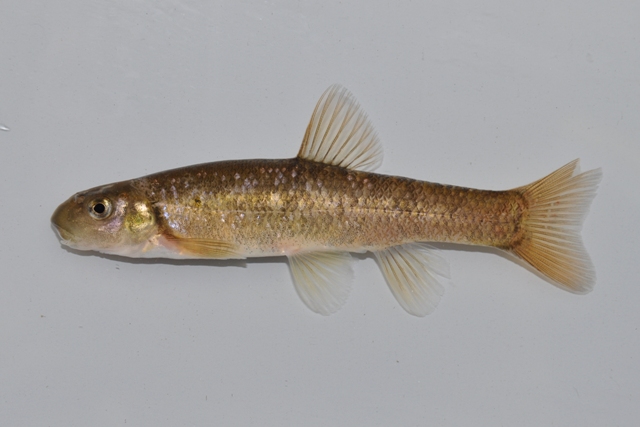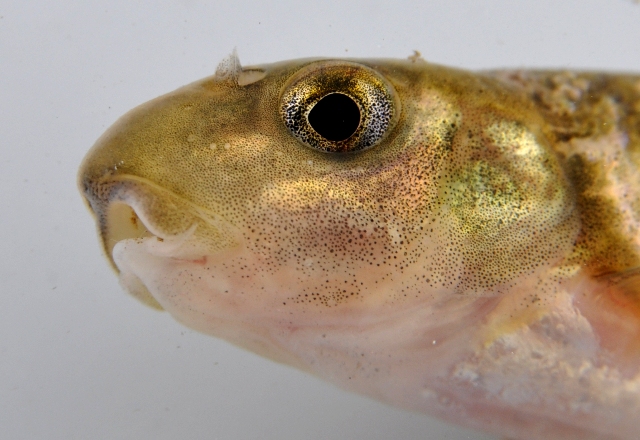Western Tonguetied Minnow
(Exoglossum laurae hubbsi )


The western subspecies of this unique minnow is only found in Ohio. This population is separated by several hundred miles from the two populations of the eastern tonguetied minnow. Tonguetied minnows get their name from their odd mouth (right).
Description
The western tonguetied minnow gets its name from its odd mouth. Most minnows have fleshy lips on both the upper and lower jaw. However, in this species only the outer 1/3 of the lower lips on either side of the mouth are covered with fleshy lobes. The center of the lower jaw projects forward as a bony sheath without fleshy lips. This odd mouth is sub-terminal (ending below tip of snout) and rather small. This species has a dark slate gray to brown back, lighter gray or brown sides with purplish flecks or reflections, and a white or light cream colored belly. Young western tonguetied minnows have a faint mid-lateral stripe which is very faded or absent in adults.
Habitat and Habits
The western tonguetied minnow is only found in SW Ohio in the Great Miami and Little Miami River systems. They were once rather well distributed in the upper portion of both of these river systems but today can only be found in the Mad River and tributaries of it in the Great Miami River system. Additionally, there may still be a few in the extreme upper portion of the Little Miami River. This species is very intolerant of turbid (murky) waters and needs a clean gravel and pebble stream bottom. They also rely on forested and undercut stream banks, and alternating riffle pool sequences. Lastly they may need somewhat cooler water temperatures than the average Ohio stream has in summer.
Reproduction and Care of the Young
The western tonguetied minnow spawns in May when water temperatures reach 60 degrees Fahrenheit. Males construct large nest made by placing small pebbles in a rectangular pile. This pile, which lies perpendicular to the streams flow, can be 1-4 feet long and 8-18 inches wide. Spawning occurs above this nest and males continue to pile more pebbles on top of the nest between spawning events. Once spawning is finished the nest and eggs are left to hatch on their own.